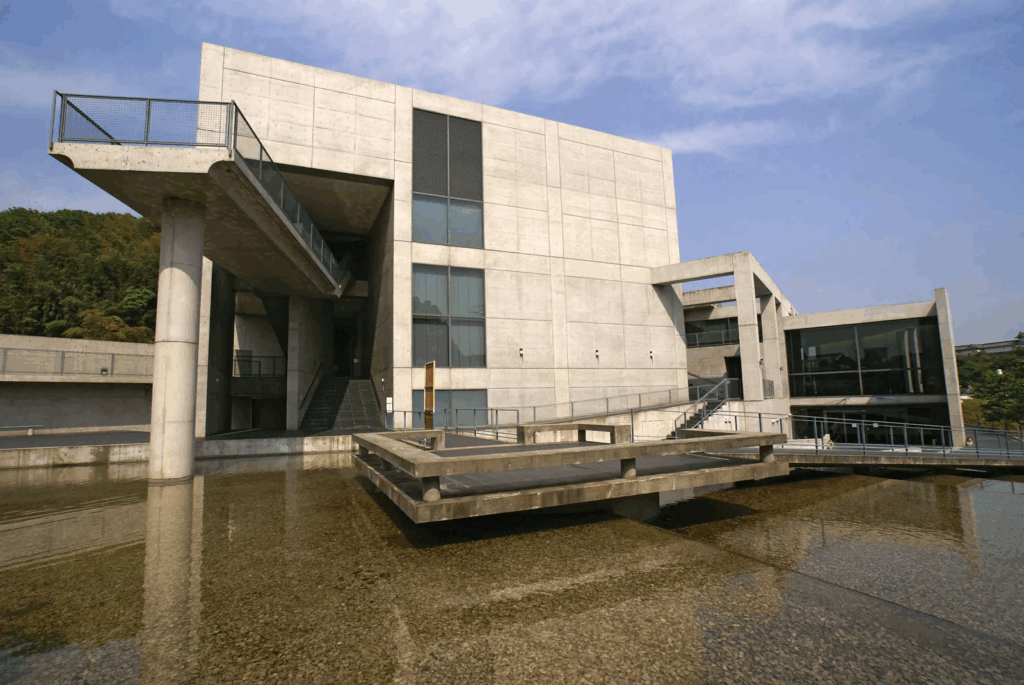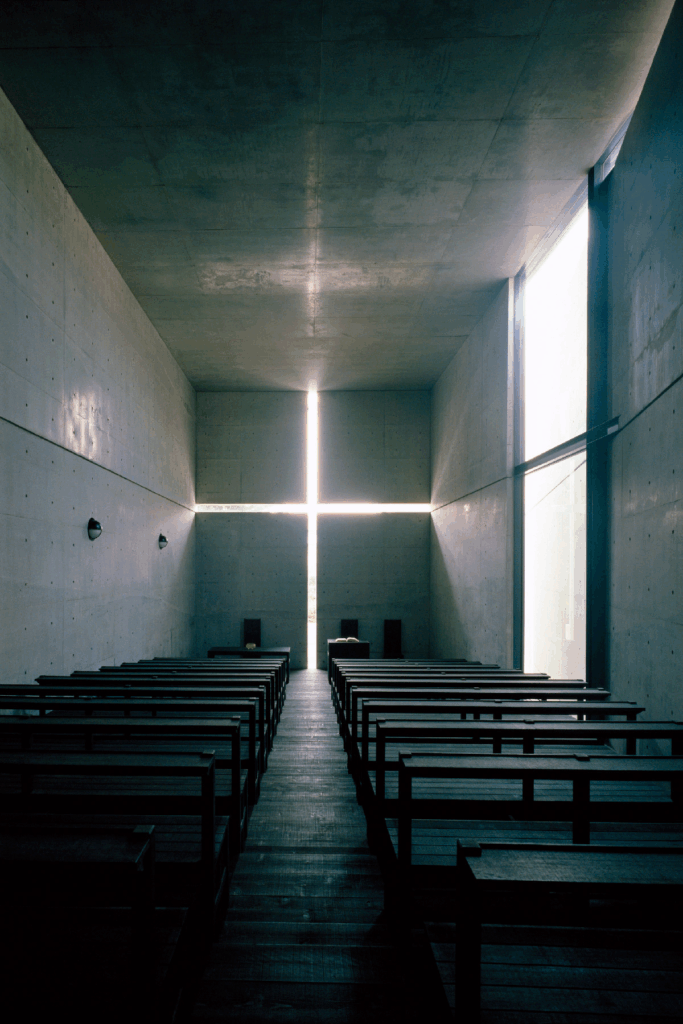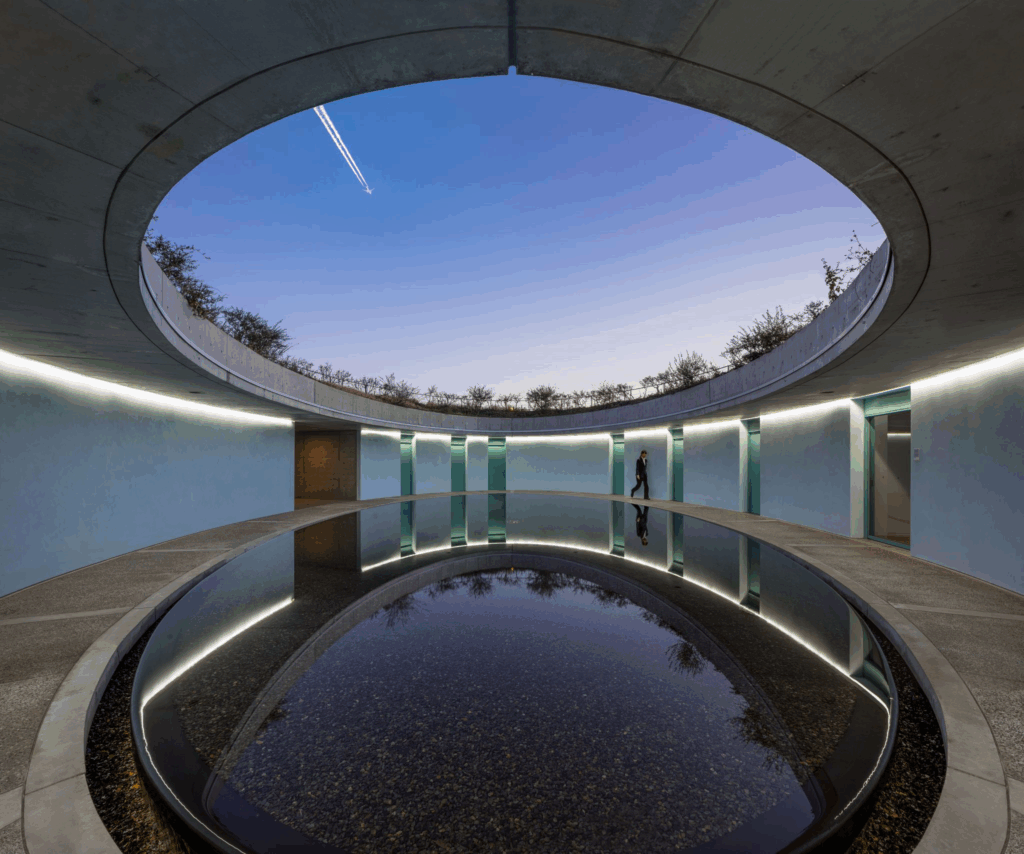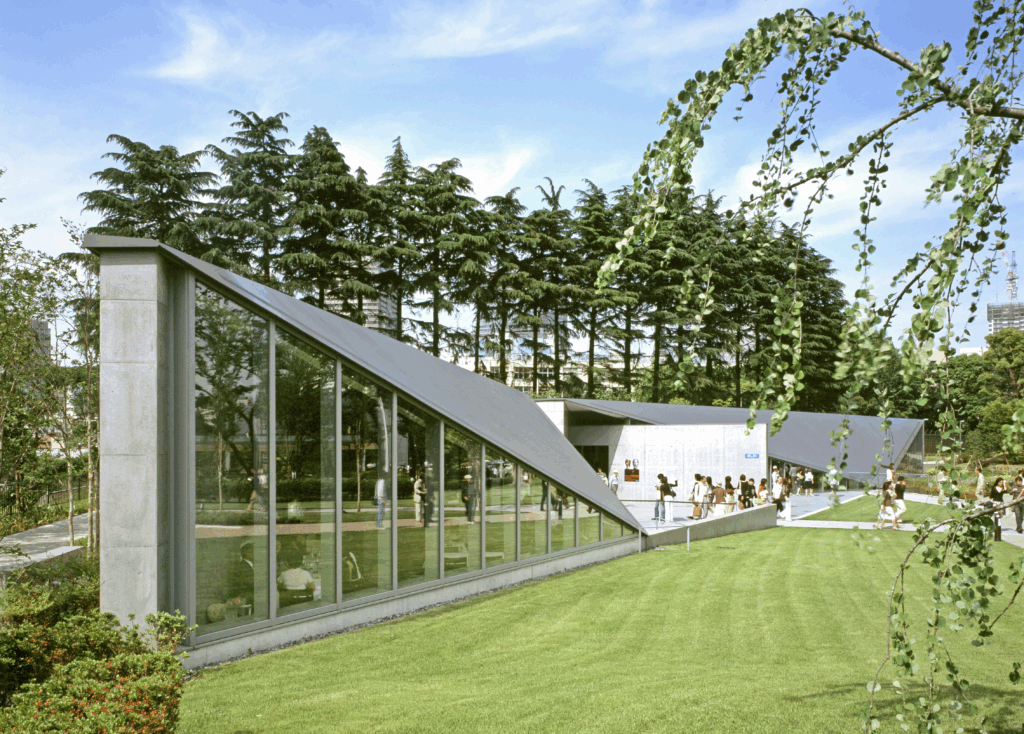Tadao Ando is one of the most revered architects in the world — a man who transformed raw concrete into poetry.
Self-taught, spiritual, and fiercely independent, he has built a body of work that captures the quiet power of simplicity, light, and nature.
From the Church of the Light in Osaka to the Chichu Art Museum in Naoshima, Tadao Ando’s architecture invites reflection, serenity, and connection to the world around us.
Early Life and Unlikely Beginnings
Born in Osaka, Japan, in 1941, Tadao Ando’s path to architecture was unconventional. He never attended architecture school or studied under a master. Instead, he learned by observing, sketching, and travelling across the globe.

As a young man, Ando worked as a boxer. The discipline, precision, and solitude of the sport would later shape his approach to design. He once said that architecture, like boxing, is a fight — not against an opponent, but against oneself.
During the 1960s, he embarked on a self-directed journey through Europe, Africa, and the United States, visiting buildings by Le Corbusier, Frank Lloyd Wright, and Louis Kahn. These encounters convinced him that architecture could be more than shelter — it could be a form of spiritual experience.
In 1969, he founded Tadao Ando Architect & Associates in Osaka. His early projects — mostly small homes — already displayed his signature elements: clean geometry, natural light, and bare concrete that seems alive with shadow.
Philosophy: The Spirit of Minimalism
Tadao Ando’s architecture is not about what is added, but what is removed. He strips away decoration to reveal the essence of space.

At the heart of his philosophy is the belief that architecture should create a dialogue between people and nature. His buildings frame wind, light, and water as if they were part of the structure itself.
He once said:
“I do not believe architecture should speak too much. It should remain silent and let nature in the guise of sunlight and wind speak.”
Ando’s preferred material — smooth, exposed concrete — is both humble and powerful. Poured with meticulous care, it reflects light with an almost spiritual softness. He often combines this material with wood, glass, and water, using them to balance warmth and stillness.

Every line, shadow, and reflection in an Ando building is deliberate, forming a meditative atmosphere where the visitor becomes acutely aware of space and self.
Signature Works
Church of the Light (Ibaraki, Osaka, 1989)
Perhaps Ando’s most iconic creation, this small church is a masterpiece of restraint. The building is made entirely of bare concrete, with a single cross-shaped slit cut into the altar wall. As daylight streams through, it forms a luminous cross of light that transforms the interior into a sacred void.
It is a lesson in how light itself can become architecture.
(Image idea: Interior of Church of the Light — “Concrete and illumination become one.”)
Chichu Art Museum (Naoshima Island, 2004)
Built mostly underground to preserve the natural landscape, the Chichu Art Museum redefines what a museum can be. Ando designed it so that daylight interacts with artworks by Monet, Turrell, and De Maria. The building is carved from the earth, invisible from a distance — a quiet conversation between art, architecture, and nature.
(Image idea: Chichu Art Museum — “An invisible museum that honors both light and land.”)
Water Temple (Awaji Island, 1991)
This temple is reached by walking across a lotus pond and descending a staircase into the heart of the earth. The play of reflection, silence, and descent evokes a spiritual journey. It’s one of Ando’s most symbolic and moving works, merging Buddhist philosophy with minimalist design.
(Image idea: Water Temple — “A journey through stillness and reflection.”)
Pulitzer Arts Foundation (St. Louis, USA, 2001)
Ando’s mastery extended beyond Japan. In the Pulitzer Arts Foundation, he used concrete planes, diffused light, and elegant proportions to create a serene environment for art. It’s proof that his minimalism transcends culture — universal in feeling, timeless in form.
Light as a Material

For Ando, light is not an afterthought — it’s his most important building material.
He sculpts it through narrow openings, skylights, or hidden slits in walls. The result is an ever-changing choreography of illumination that animates static forms.
In many of his works, light marks the passage of time. Morning sunlight cuts across rough walls; afternoon shadows carve new geometries. This subtle awareness of the ephemeral is what makes his spaces so alive.
Nature and the Sacred
Although his architecture is rooted in modernism, Ando’s philosophy is profoundly Japanese — blending Zen simplicity, the beauty of impermanence (wabi-sabi), and the spiritual presence of nature.
Water, stone, and sky are his collaborators. Whether designing a museum or a house, he ensures that the environment becomes part of the experience. His buildings do not dominate nature; they defer to it.
In the Water Temple, visitors descend into stillness. In the Chichu Art Museum, the earth becomes both wall and roof. In the Church of the Light, the divine is made visible through a single ray of sun.
Awards and Recognition
Tadao Ando has received numerous international honors, including:
- The Pritzker Architecture Prize (1995)
- The American Institute of Architects Gold Medal (2002)
- The UIA Gold Medal (2005)
- The Order of Culture from Japan (2010)
His work has influenced countless architects worldwide — not through spectacle, but through silence.
Legacy: Architecture as Meditation
In a world overwhelmed by noise, excess, and speed, Tadao Ando’s buildings offer something rare — peace.
His minimalist approach teaches us that true power lies in restraint. His concrete walls are not cold but alive; his voids are not empty but full of meaning.
He reminds us that architecture can be spiritual without being religious, monumental without being loud, modern without abandoning humanity.
Tadao Ando continues to design, lecture, and build, inspiring new generations to slow down, to look, and to listen. His message is simple yet profound:
“To change the world, build something that changes how people feel.”



